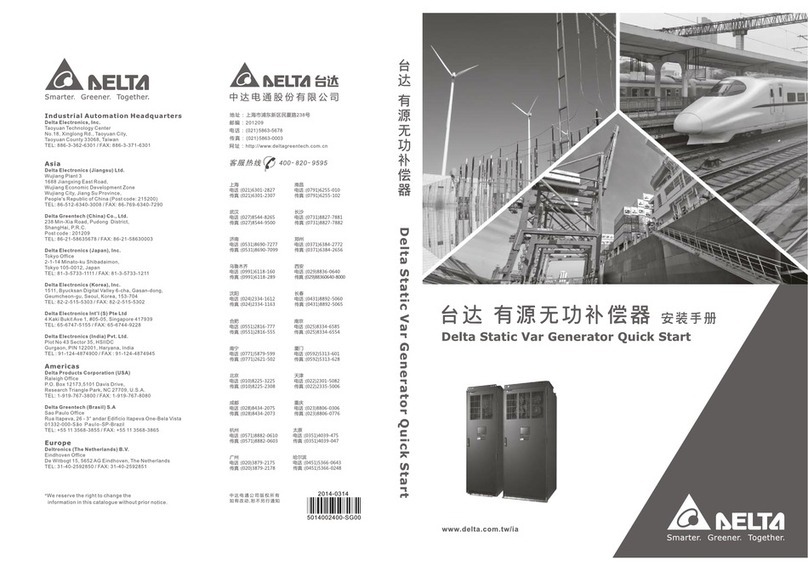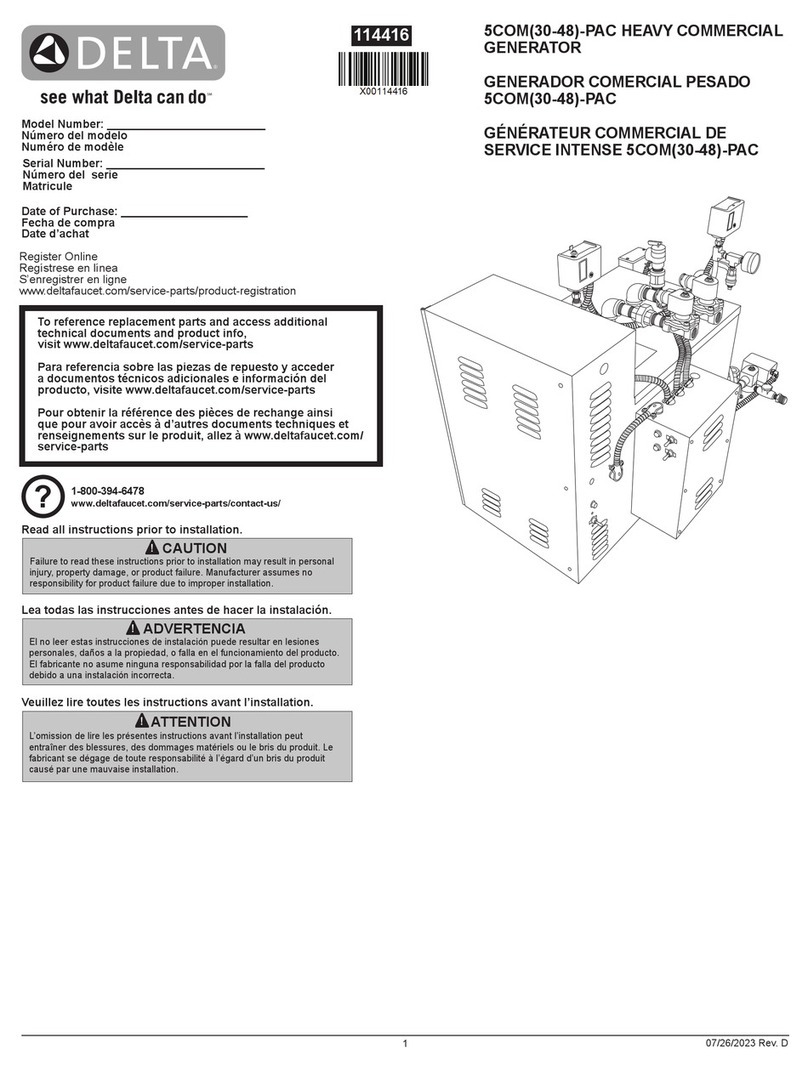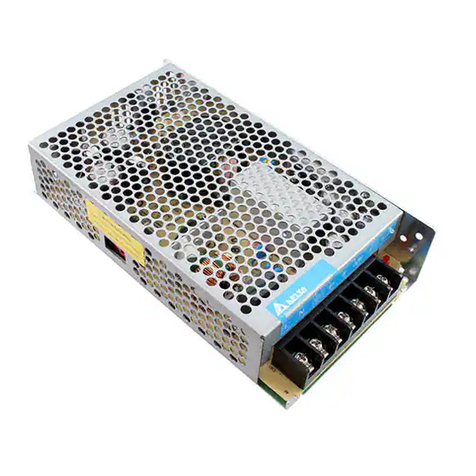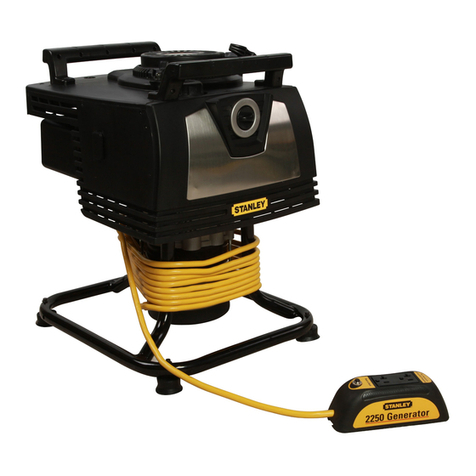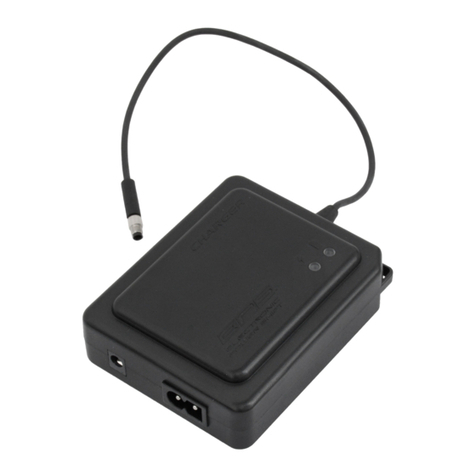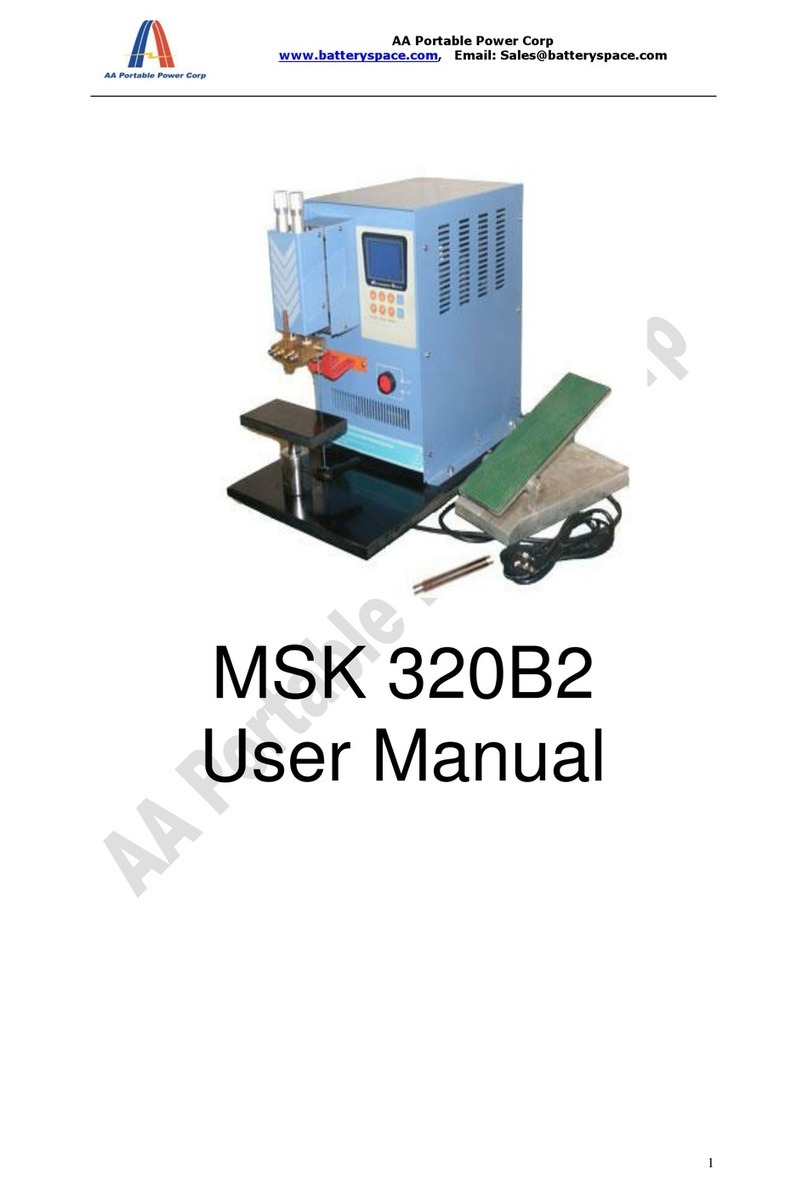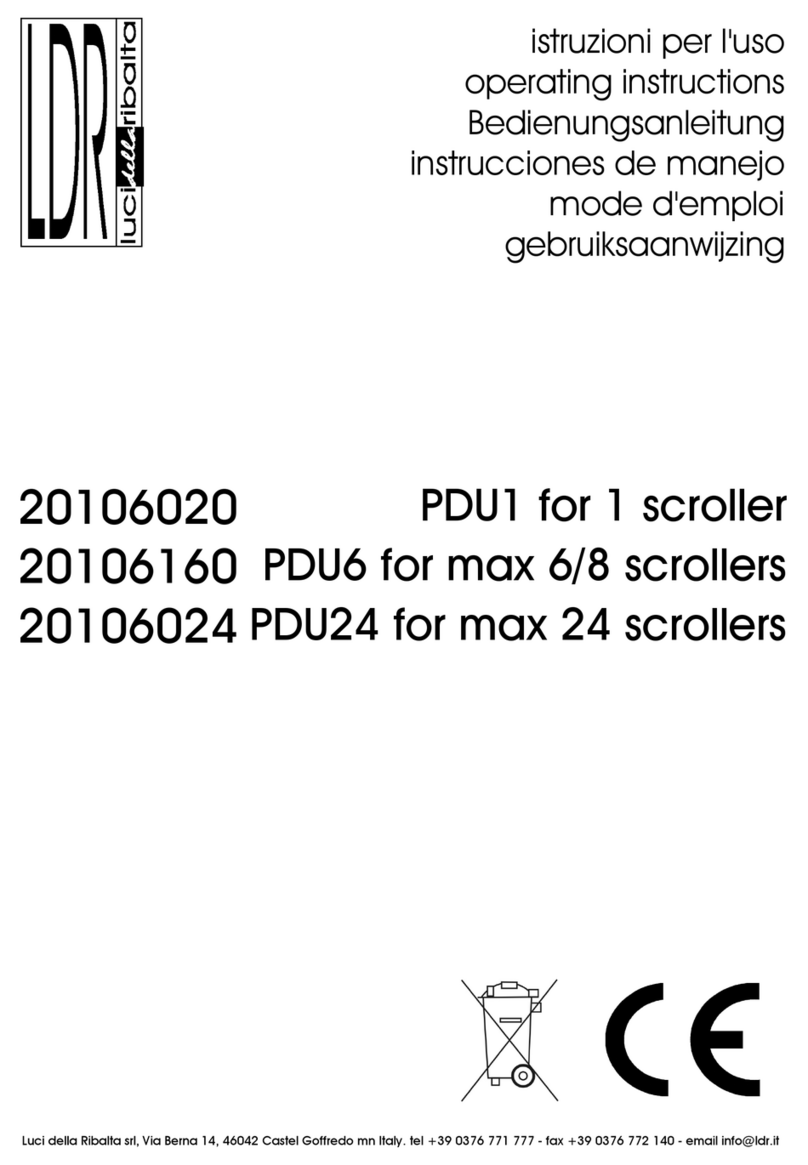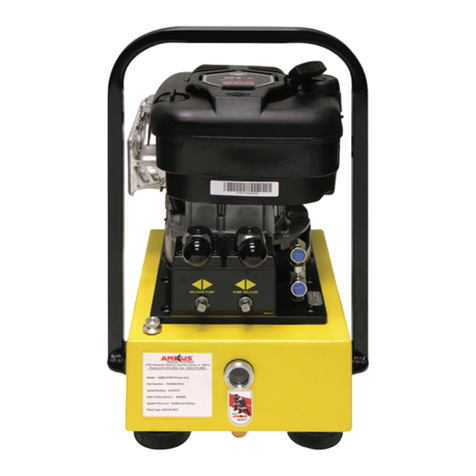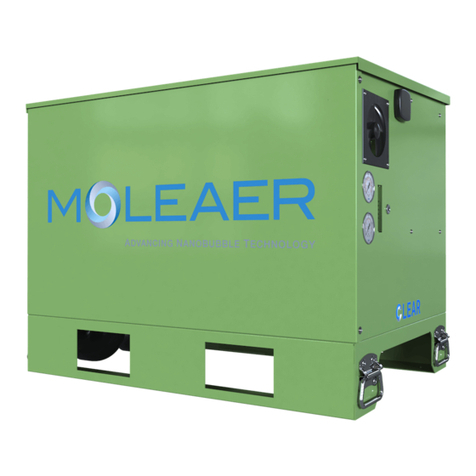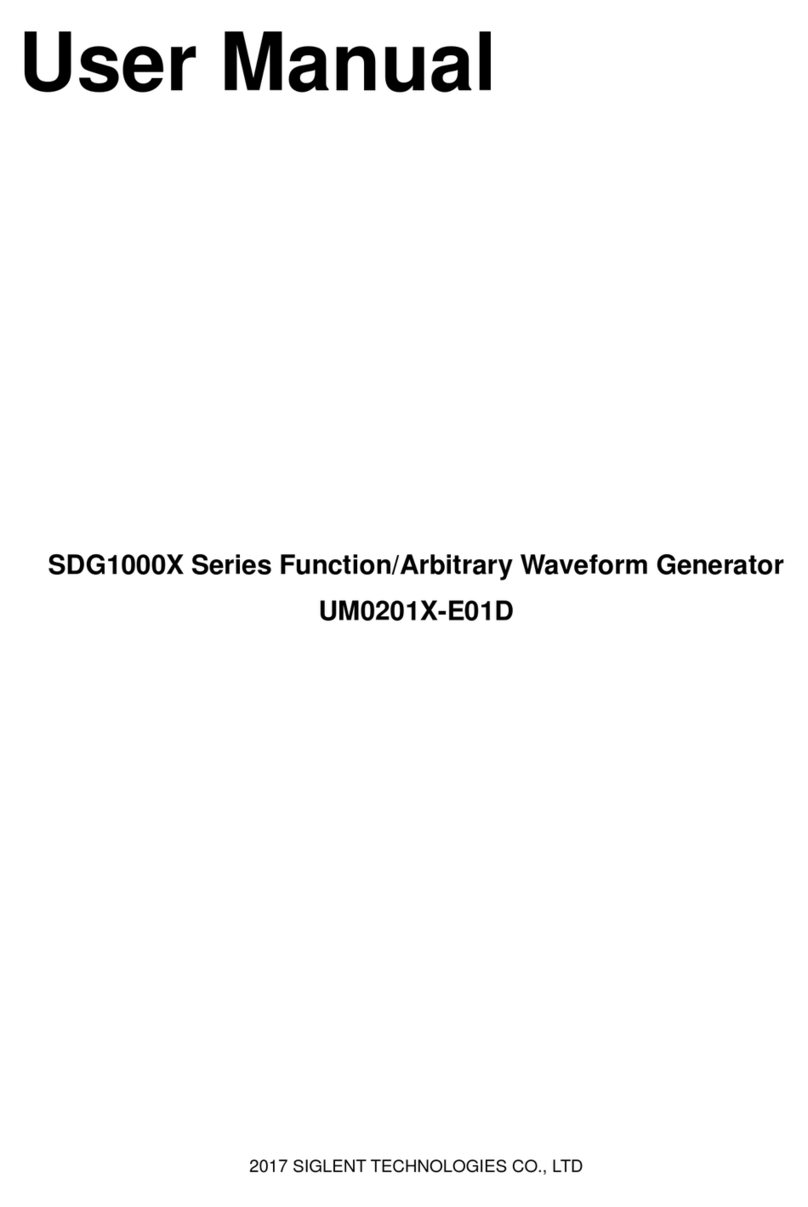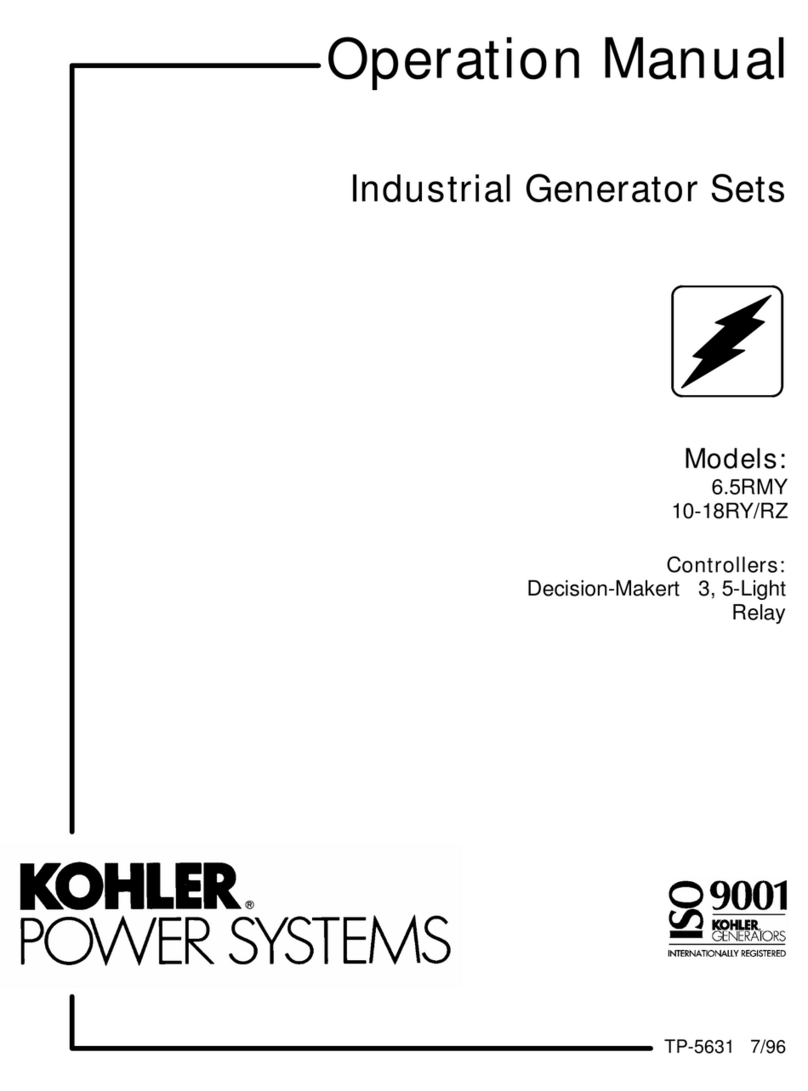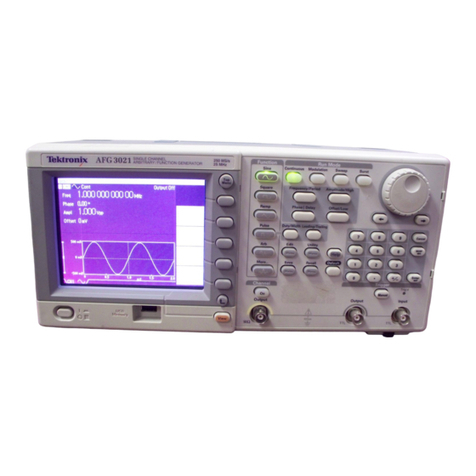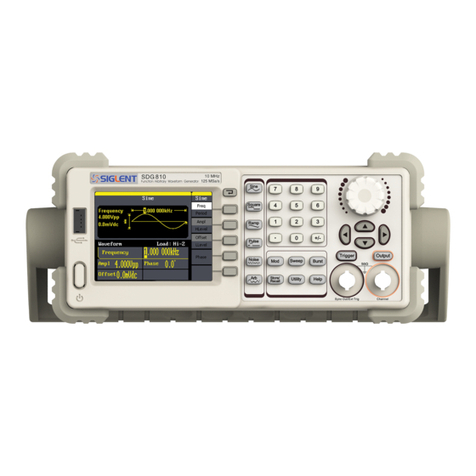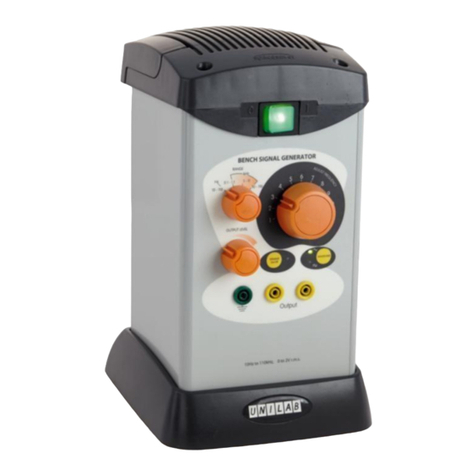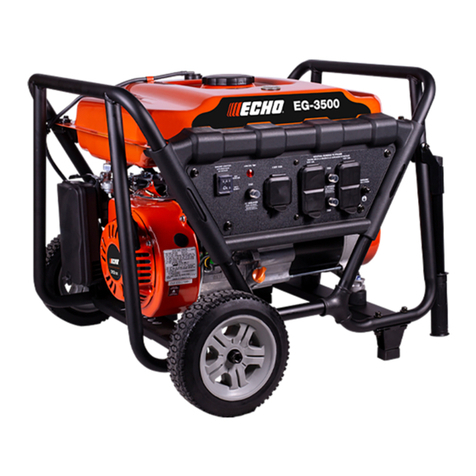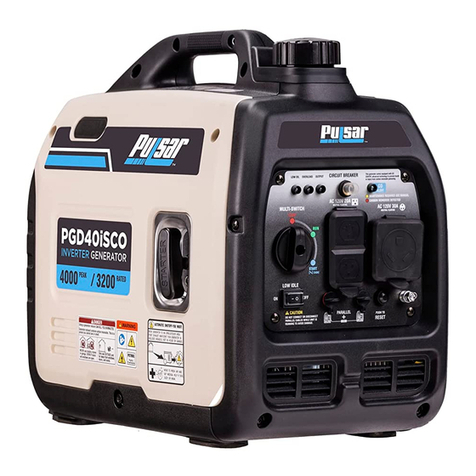Delta PQC Series User manual

www.deltaww.com
Delta PQC Series
400V Mixed Fixed Type Static Var Generator
User Manual
The power behind competitiveness

PQC Series
Static Var Generator 2
SAVE THIS MANUAL
This manual contains important instructions and warnings that you shall follow during the
installation, operation, storage and maintenance of this product. Failure to heed these
instructions and warnings will void the warranty.
Copyright © 2022 by Delta Electronics Inc. All Rights Reserved. All rights of this User Manual
(“Manual”), including but not limited to the contents, information, and figures are solely
owned and reserved by Delta Electronics Inc. (“Delta”). The Manual can only be applied to
the operation or the use of this product. Any disposition, duplication, dissemination,
reproduction, modification, translation, extraction, or usage of this Manual in whole or in part
is prohibited without the prior written permission of Delta. Given that Delta will continuously
improve and develop the product, changes may be made to the information in this Manual
at any time without obligation to notify any person of such revision or changes. Delta will
make all possible efforts to secure the accuracy and the integrity of this Manual. Delta
disclaims any kinds or forms of warranty, guarantee, or undertaking, either expressly or
implicitly, including but not limited to the completeness, faultlessness, accuracy, non-
infringement, merchantability or fitness for a particular purpose of the Manual.

3
Table of Content
Chapter 1 : Important Safety Instructions ..............................................................................5
1.1Installation Warnings...........................................................................5
1.2Connection Warnings..........................................................................5
1.3Usage Warnings..................................................................................6
1.4Storage Warnings ...............................................................................8
1.5Standard Compliance .........................................................................8
Chapter 2 : Introduction .........................................................................................................9
2.1Product Introduction............................................................................9
2.2PQC Series Mixed Fixed type SVG Product Category.....................10
2.3Functions & Features........................................................................12
2.4Product Structure and Appearance...................................................13
2.4.1HMI Display.......................................................................................13
2.4.1Module Exterior & Dimensions .........................................................21
2.5Inspection..........................................................................................23
Chapter 3 : Operation Modes ..............................................................................................25
3.1Pre-installation Confirmation.............................................................25
3.2Installation Environment....................................................................25
3.3SVG Cabinet Unpacking and Hoisting..............................................27
3.3.1Unpacking SVG Cabinet...................................................................28
3.3.2Hoisting SVG Cabinet .......................................................................29
3.4SVG Cabinet Wiring..........................................................................30
3.5Module Installation ............................................................................31
3.5.1SVG Module Structure ......................................................................31
3.5.2Pluggable terminals ..........................................................................34
3.5.3HMI Display Structure .......................................................................38
3.5.4Module Installation and Wiring..........................................................40
3.6Load Current Detection for CT Installation and Wiring .....................45
3.6.1CT Selection......................................................................................45
3.6.2Basic CT Installation & Wiring...........................................................46
Chapter 4 : SVG Operation Procedure................................................................................49
4.1Inspection Before Start-up ................................................................49

PQC Series
Static Var Generator 4
4.2Start-up Procedures..........................................................................50
Chapter 5 : Display and Settings .........................................................................................51
5.1Description of the 7’’ HMI Display .....................................................51
5.2Description of the 10’’ HMI Display ...................................................54
Chapter 6 : Maintenance .....................................................................................................57
Chapter 7 : Troubleshooting ................................................................................................58
Appendix 1 : Technical Specifications .................................................................................59
Appendix 2 : Warranty .........................................................................................................61

5
Chapter 1 : Important Safety Instructions
1.1 Installation Warnings
•The Static Var Generator (SVG) is designed for multiple applications. It shall be
connected to a power grid system, in parallel with the load, as a solution for reactive
power, imbalance and part of harmonics mitigation.
•Install the SVG in a well-ventilated indoor area, away from excess moisture, heat, dust,
flammable gas or explosives. To avoid fire accidents and electric shock, the indoor area
must be free of conductive contaminants. For the temperature and humidity
specifications, please refer to Appendix 1: Technical Specifications.
•The area around the SVG must be kept clear of objects to allow ventilation and easy
access for operating the machine.
•The SVG shall not be exposed to the environment of corrosive gases/ particles.
•The SVG shall be installed in a cabinet with a protective marking. Appropriate
ventilation channels for heat dissipation shall be maintained.
•To minimize fire and electric shock hazards, installation must be conducted by qualified
personnel in a controllable working environment.
•To minimize electric shock hazards, all maintenance work must be carried out by a
qualified technician, and be sure to cut off all power supply before maintenance.
•After the system power is cut off, please wait for the operating switch to cool down
before you perform any operation to prevent burn injury caused by the high
temperature.
•High voltage hazards! It takes at least 15 minutes for the DC capacitor to discharge.
Please make sure the device has discharged completely before carrying out any
operation.
•To minimize electric shock hazards, please read this Manual carefully before switching
the power on, and keep this Manual properly for permanent reference.
1.2 Connection Warnings
•To prevent a possible risk of current leakage, the SVG shall be earthed properly.
•With regard to wiring, the compensation capacity and the current-carrying capacities
of cables shall be taken into account.
•The SVG’s power wires must be connected to a protective device. It is suggested
that every module shall be equipped with an overcurrent protection device certified by
a third party. The installation location shall be taken into consideration. Please
choose a protection device that has enough breaking capacity.
•The capacity of the protective devices shall fit that of the SVG. Please follow the chart
below to select a proper protection device in accordance with the SVG capacity.

PQC Series
Static Var Generator 6
SVG Capacity Recommended Protection Device Model
50 kvar Schneider NSX160H TM100D 3P3D (690V 100A)
100 kvar Schneider NSX250H TM200D 3P3D (690V 200A)
•The short circuit parameters of the SVG are as follows:
SVG
Capacity
Conditional
Short Circuit
Current (Icc)
Prospective Short
Circuit Current for
the Minimum
Demand (Icp,mr)
Short Circuit
Protection Device
(SCPD)
50 kvar 20 kA 2.5 kA 80A Fuse *2 Type:
BUSSMANN 80FE
100 kvar 20 kA 5 kA 160A Fuse *2 Type:
HINODE 660GH-160
•The three-phase, four-wire SVG is applicable to the power grid system with neutral
grounding.
•The CT wire shall be fastened to avoid open circuit, which will lead to high-voltage risk
and secondary circuit burning.
1.3 Usage Warnings
•Only qualified service personnel can update SVG hardware and firmware.
•Since the SVG is used for reactive power and imbalance compensation of the power
grid, the capacity selection of the SVG shall be subject to reactive power and imbalance
content to avoid poor compensation due to insufficient capacity.
•Before installation, wiring and working on the SVG’s internal circuits, please completely
cut off all power supplying to the SVG.
•Since SVG is used for reactive power mitigation, external CT shall be connected to
detect the reactive current.
•To guarantee sound reliability and avoid overheating, do not block or cover the air inlet
and outlet.
•The thermal loss of Mixed Fixed type SVG is not bigger than 3% of rated apparent
power.
•The operating environment temperature of SVG shall be between -10°C (14°F) and
55°C (131°F). The relative humidity shall be within 95% (non-condensing). For detailed
derating information, please refer to 2.3 Functions & Features.
•The SVG system shall be installed at a place with altitude less or equal to 1000 m
(3280 ft). Derating 1% per 100 m (328 ft) when the altitude is between 1000 m and
3000 m (3280 ft ~ 9842 ft). For more question, please consult Delta or Delta distributor.

7
•Before applying electric power to the SVG, you must allow the SVG to adjust to room
temperature (20°C ~ 25°C (68°F ~ 77°F)) for at least one hour and ensure that there
is no moisture condensing inside the unit.
•Do not put beverages on the SVG or any other accessory associated with the SVG.
•Do not open or remove the covers or panels of the SVG to avoid high-voltage electric
shock. Only authorized Delta engineers or service personnel can do so for installation
or maintenance. If you want to open or remove the covers or panels, do it only under
the supervision of authorized Delta engineers or service personnel.
•Some components like fans will become worn-out due to long-term usage, and this will
increase the risk of SVG failure. To replace and maintain the components, please
contact Delta service personnel.
•The SVG complies with the regulations of Overvoltage Category III in IEC 62477. It
is suggested that appropriate surge voltage protection devices shall be chosen in
accordance with the actual power system type. If appropriate protection devices are
not used, the surge voltage may exceed the SVG's capacity and cause SVG
damage. If you are uncertain regarding the SVG's application, please contact Delta
service personnel.
Wiring
System
Recommended
Model Main Technology Indicator
3P3W
Sichuan Zhongguang
Lightning
ZGG40-385 (3+0) Ar
Nominal Operating Voltage Uo:230V AC
Max. Continuous Operating Voltage Uc:385V AC
Rated Discharge Current In:20 kA
Max. Discharge Current Imax:40 kA
Voltage Protection Level Up:1.8 kV
3P4W
Sichuan Zhongguang
Lightning
ZGG40-385 (3+1) r
•You must contact Delta customer service if any of the following events occurs:
1. Any liquid is poured or splashed on the SVG.
2. The SVG is deformed.
3. Any conductive powders or metals enter into the SVG.
4. The SVG does not run normally after you carefully followed the instructions in this
User Manual.

PQC Series
Static Var Generator 8
1.4 Storage Warnings
•Use the original packing materials to pack the SVG to prevent any possible damage
from rodents.
•If the SVG needs to be stored prior to installation, it shall be placed in a dry indoor
area. The allowable storage temperature is -40°C ~ 70°C (-40°F ~ 158°F) and the
relative humidity is within 95% (non-condensing).
•If the HMI needs to be stored prior to installation, it shall be placed in a dry indoor
area. The allowable storage temperature is -30°C ~ 70°C (-22°F ~ 158°F) and the
relative humidity is within 95% (non-condensing).
1.5 Standard Compliance
•IEC 62477-1:2016 Safety requirements for power electronic converter systems and
equipment, Part 1: General
•IEC 61000-6-2:2016 Electromagnetic compatibility (EMC) Part 6-2: Generic
standards - Immunity standard for industrial environments
•IEC 61000-6-4:2018 Electromagnetic compatibility (EMC) Part 6-4: Generic
standards - Emission standard for industrial environments

9
Chapter 2 : Introduction
2.1 Product Introduction
The Delta PQC Series Mixed Fixed type SVG, a reactive power compensator for the three-
phase power grid, is applied to the reactive power control of the power grid. Features of the
device are shown as below:
•Compensates both inductive (lagging) and capacitive (leading) reactive power.
•Compensates 2nd-25th harmonic currents(selectable) with 20% of rated current
output capacity, 100kvar SVG can output 30A H2-H25 harmonic compensation
current.
•Correct three-phase load imbalance.
•Rapid dynamic responses, stable parameters and good harmonic compensation
results.
•High efficiency and low loss. The advanced ECO mode allows you to save more
energy.
•The modular design allows you to freely select different modules for the harmonic
power compensation for different capacities.
•The system adopts an advanced 3-level structure and consists of digital signal proces-
sors (DSP), Field Programmable Gate Array (FPGA) and high power electronic
devices, which has excellent performance and superior reliability.
•Supports remote on/off and fault monitoring via output relays and supports Modbus
RTU/ TCP for remote SCADA monitoring.
Please see Figure 2-1 for the SVG system block diagram.
The SVG system consists of multiple SVG modules and one system cabinet. Load current
is detected by external CT and load reactive power is calculated by SVG controller. Based
on the load current feedback, the controller manages power circuit to output inverse reactive
power to cancel out load reactive power. The system cabinet is equipped with a HMI Display
that shows the information of individual modules and control the operation of individual
modules. All power modules are paralleled connection and they are independently working.
(Figure 2-1: SVG System Block Diagram)

PQC Series
Static Var Generator 10
2.2 PQC Series Mixed Fixed type SVG Product Category
The Delta PQC Series Mixed Fixed type SVG is categorized by the capacity and wiring
system. Table 2-1 lists the information regarding the SVG module products.
Table 2-1:PQC Series Mixed Fixed Type SVG Specifications
Product Model Capacity Wiring
System
SVG Module
PQCS-380-50-50MM4 50 kvar 3P4W
PQCS-380-50-50MM3 50 kvar 3P3W
PQCS-380-100-100MM4 100 kvar 3P4W
PQCS-380-100-100MM3 100 kvar 3P3W
SVG Module
(Maintained from
the Front)
SVG Module + Pluggable terminals
HMI Display
PQC-HMI-F (7’’) N/A N/A
PQC-HMI-F10 (10’’) N/A N/A
Accessories Pluggable terminals N/A N/A
NOTE:
For detailed information regarding the Pluggable terminals, please see Chapter
3.5.2.
•SVG Module
The SVG module is available in two wiring modes, i.e. 3P3W and 3P4W, and is available in
the following output capacity: 50kvar and 100kvar.
The 3P4W module shall be connected to a neutral line, which in turn will improve its ability
of compensating the zero sequence current. The 3P3W model is not required to connect to
the neutral line; as a result, it is not able to compensate the zero sequence current. Figure
2-2 shows the SVG module appearance.

11
(Figure 2-2: SVG Module)
•SVG System Cabinet
The SVG module and the HMI Display can be installed inside a standard or customized
cabinet that meets the size requirements. Figure 2-3 is the SVG system cabinet.
The system capacity is determined by the capacity and quantity of SVG modules installed
in the system. Customers can select modules of different quantity and capacity combination
as well as the system cabinet based on their requirements. Please consult Delta or Delta
distributor to verify the required capacity.
The HMI Display connects with the SVG module via an internal connection port. The HMI
Display is capable of monitoring module operations and configuring parameters. The HMI
Display adopts the embedded design and is suitable for all kinds of cabinets. See Figure 2-
4 ~ Figure 2-6 for the HMI Display appearance.
(Figure 2-3: SVG System Cabinet)

PQC Series
Static Var Generator 12
2.3 Functions & Features
•Multifunction: The SVG can simultaneously monitor and compensate for both
inductive/capacitive reactive power and load imbalance.
•Superior reactive power compensation performance: The efficiency of reactive power
compensation is up to 98%.
•Excellent reactive power compensation: The SVG is capable of rapid (ms-grade),
precise (-0.99< PF< 0.99) and bi-directional (capacitive and inductive) reactive power
compensation.
•Outstanding compensation of load imbalance: the 3P4W SVG system can realize
correction for either active or reactive imbalance, and can eliminate the neutral current.
•Wide input voltage and frequency range, suitable for the applications with diesel
generators and harsh power supply conditions.
Module Type Input Voltage Range Input Frequency Range
Mixed fixed type 400V SVG
Module (3P4W) 228V ~ 456V 45 ~ 66 Hz
Mixed fixed type 400V SVG
Module (3P3W) 228V ~ 480V 45 ~ 66 Hz
•Automatic detection for the input frequency. The input frequency can be 50Hz or 60Hz.
•Auto start-up for the inverter: When the AC power source is back on, the inverter will
be turned on automatically.
•Wide working temperature range
Module Type
Working Temperature
Range with
100% Capacity
Capacity Derating over
Temperature
Mixed fixed type 50kvar
SVG Module
-10°C ~ 40°C
(14°F~104°F)
80% at 50°C (122°F)
50% at 55°C (131°F)
0% at 55°C above
Mixed fixed type 100kvar
SVG Module
-10°C ~ 40°C
(14°F~104°F)
80% at 50°C (122°F)
50% at 55°C (131°F)
0% at 55°C above
•Over temperature protection is applied on key components, such as the IGBT and
inductor.
•Sound stability: SVG acts as an infinite impedance to the power grid system and has
no negative effect on power system. It is able to output accurate compensation current,
which has no negative effect on other equipment.
•Low power loss. The SVG supports ECO mode to allow you to save more energy.

13
•Integrating control: The capacitor compensation device and the Static Var Generator
(SVG) can be controlled by an integrating controller to achieve higher compatibility.
•Flexible applications: Modules can be embedded into standard or customized cabinets
that meet the size requirements.
•Wide capacity coverage: The capacity of a single cabinet is based on the quantity of
module installed. And there is no restriction in terms of system cabinets connected in
parallel.
•User-friendly Mandarin/ English interface: Parameters setting for the event log,
automatic error alarm and error record.
•Complete function setup: Automatic start-up for the self-inspection function. The soft
start time can be set up and the nominal output can be limited.
2.4 Product Structure and Appearance
2.4.1 HMI Display
There are two kinds of HMI display. One is a 7’’ HMI touchscreen display (Figure 2-4) and
another is a 10’’ HMI touchscreen display (Figure 2-6).
(Figure 2-4: PQC-HMI-F Front Side)
No. Item Description
❶NORMAL (Green) When the light is on, the SVG operates normally.
❷STANDBY (Yellow) When the light is on, the SVG is in standby mode.
❸FAULT (Red) When the light is on, the SVG is malfunctioning.
❹Touchscreen Users can operate the device through the touchscreen.
❺Buzzer Alarm sounding to warn users.

PQC Series
Static Var Generator 14
(Figure 2-5: PQC-HMI-F Left and Right Sides)
No. Item Description
❶OUTPUT
(Dry Contacts)
Output dry contact signals of system operation and other
status.
❷INPUT
(Wet Contacts)
Input wet contact signals of system temperature, EPO and
other signals.
❸INTERNAL
(MODBUS) Communication port between the HMI and the module.
❹RESET Reset button for the HMI.
❺RS485 The standard RS485 protocol for the communication with
the master computer.
❻LAN The standard Ethernet port for the communication with the
master computer.
❼ USB1
USB2 The USB communication ports.
NOTE:
1. Except for the input and output ports, other terminals are insulated. Contacting
these terminals will not cause the risk of electric shock.
2. Specifications of the input and output ports are as follows.

15
No. Port Definition Port Specs
❶OUTPUT (Dry contacts) 250Vac/ 30Vdc,2.5A
❷INPUT (NTC) R25 = 10kohm,B25/85 = 3435,±1%
❸INPUT (Except for NTC) 24V,10mA
For the definition of Output Dry Contact Signals interface, please refer to Table 2-2.
Table 2-2: The Definition of Output Dry Contact Signals Interface
Item Pin No Signal Electrical Character Function
OUTPUT
(Dry Contacts)
1 RUN-A 250 Vac/ 30 Vdc 2.5A Run state (PM
Run, Close)
2 RUN-B 250 Vac/ 30 Vdc 2.5A
3 FAULT-A 250 Vac/ 30 Vdc 2.5A Fault state (PM
Fault, Close)
4 FAULT-B 250 Vac/ 30 Vdc 2.5A
5 FAN-A 250 Vac/ 30 Vdc 2.5A Fan control (Fan
ON, Close; Fan
OFF, Open)
6 FAN-B 250 Vac/ 30 Vdc 2.5A
For the definition of Input Wet Contact Signals interface, please refer to Table 2-3.
Table 2-3: The Definition of Input Wet Contact Signals Interface
Item Pin No Signal Electrical Character Function
INPUT
(Wet
Contacts)
1 NTC-A NA NA
Cabinet's ambient
NTC
2 NTC-B NA NA
3 EPO-2 24V 10 mA System EPO (Close,
Enable Open,
Disable )
4 EPO-1 24V 10 mA
5 SPD-A 24V 10 mA System SPD
(Close, SPD Fault
Open, NO Fault)
6 SPD-B 24V 10 mA
7 ON/OFF-A 24V 10 mA PM Turn ON/OFF
(Close, Turn ON
Open, Turn OFF)
8 ON/OFF-B 24V 10mA

PQC Series
Static Var Generator 16
Item Pin No Signal Electrical Character Function
INPUT
(Wet
Contacts)
9 NC NC
NOTE:
For NTC signal, standard NTC sensor is configured to detect cabinet temperature,
please consult Delta or Delta distributor for detail application.
For the definition of RS485 interface, please refer to Table 2-4.
Table 2-4: The Definition of RS485 Interface
Item Pin No Signal Function
RS485
1 Reserved
Internal using
2 Reserved
3 Reserved
4 FG1 RS485 signal ground
5 Reserved
Internal using
6 Reserved
7 RS485A
Outer RS485 using
8 RS485B
For the definition of LAN interface, please refer to Table 2-5.
Table 2-5: The Definition of LAN Interface
Item Pin No Signal Function
LAN
1 TXP Positive end of data transmission
2 GND Signal ground
3 TXM Negative end of data transmission
4 RXP Positive end of data reception
5 GND Signal ground
6 RXM Negative end of data reception
7 NC /
8 NC /

17
NOTE:
Please refer to separate Modbus mapping document about usage and
configuration.
(Figure 2-6: PQC-HMI-F10 Front and Bottom)
No. Item Description
❶Touchscreen Users are able to perform operation through the touchscreen.
❷Tri-color LED
-When the green light is on, the device is operating normally.
-When the yellow light is on, the device is in standby mode.
-When the red light is on, the device is malfunctioning.
When a single module is connected, and the yellow and red
lights flash alternately, the device is malfunctioning and in
standby mode. When the green, yellow and red lights flash
alternately, the device is upgrading.
When multiple modules are connected, and the yellow and
green lights flash alternately, some devices are operating and
the others are in standby mode. When the yellow and red
lights flash alternately, some devices are malfunctioning and
the other are in standby mode. When the green and red lights
flash alternately, some devices are operating and the others
are malfunctioning.

PQC Series
Static Var Generator 18
No. Item Description
❸OUTPUT
(Dry Contacts)
Output dry contact signals of system operation and other
status.
❹ INPUT
(Wet Contacts)
Input wet contact signals of system temperature, EPO and
other signals.
❺
SYN-PWM
(Synchronizing
Signal Output
Terminals)
For the synchronizing signals.
❻ INTERNAL
(MODBUS) Communication port between the HMI and the module.
❼ RESET Reset button for the HMI.
(Figure 2-7: PQC-HMI-F10 Left and Right Sides)
No. Item Description
❶RTU RTU communication ports.
❷USB1
USB2 The USB communication ports.
❸LAN The standard Ethernet port for the communication with the
master computer.
❹
EXTERNAL
(Communication
Terminals)
For the external RS485 and RS232 signals and the
communication with the master computer.

19
NOTE:
1. Except for the dry contacts and wet contacts, other terminals are insulated.
Contacting these terminals will not cause the risk of electric shock.
2. Specifications of the dry contacts and wet contacts are as follows.
No. Item Description
❶OUTPUT (Dry Contacts) 250Vac/ 30Vdc,2.5A
❷INPUT (Wet Contacts) 24V,10mA
For the definition of Output Dry Contact Signals interface, please refer to Table 2-6.
Table 2-6: The Definition of Output Dry Contact Signals Interface
Item Pin No Signal Electrical Character Function
OUTPUT
(Dry Contacts)
1 RUN-A 250 Vac/ 30 Vdc 2.5A Run state (PM
Run, Close)
2 RUN-B 250 Vac/ 30 Vdc 2.5A
3 FAULT-A 250 Vac/ 30 Vdc 2.5A Fault state (PM
Fault, Close)
4 FAULT-B 250 Vac/ 30 Vdc 2.5A
5 FAN-A 250 Vac/ 30 Vdc 2.5A Fan control (Fan
ON, Close; Fan
OFF, Open)
6 FAN-B 250 Vac/ 30 Vdc 2.5A
For the definition of Input Wet Contact Signals interface, please refer to Table 2-7.
Table 2-7: The Definition of Input Wet Contact Signals Interface
Item Pin No Signal Electrical Character Function
INPUT
(Wet Contacts)
1 EPO-2 24V 10 mA System EPO
(Close, Enable Open,
Disable )
2 EPO-1 24V 10 mA
3 SPD-A 24V 10 mA
System SPD
(Close, SPD Fault
Open, NO Fault)
4 SPD-B 24V 10 mA

PQC Series
Static Var Generator 20
Item Pin No Signal Electrical Character Function
INPUT
(Wet Contacts)
5 ON/OFF-A 24V 10 mA PM Turn ON/OFF
(Close, Turn ON
Open, Turn OFF)
6 ON/OFF-B 24V 10 mA
For the definition of EXTERNAL (Communication Terminals) interface, please refer to Table
2-8.
Table 2-8: The Definition of EXTERNAL (Communication Terminals) Interface
Item Pin No Signal Function
EXTERNAL
(Communication
Terminals)
1 PE PE
2 RS485A
Outer RS485 using
3 RS485B
4 Reserved Internal using
5 Reserved Internal using
6 GF2 RS485 signal ground
For the definition of LAN interface, please refer to Table 2-9.
Table 2-9: The Definition of LAN Interface
Item Pin No Signal Function
LAN
1 TXP Positive end of data transmission
2 GND Signal ground
3 TXM Negative end of data transmission
4 RXP Positive end of data reception
5 GND Signal ground
6 RXM Negative end of data reception
7 NC /
8 NC /
Other manuals for PQC Series
3
This manual suits for next models
6
Table of contents
Other Delta Portable Generator manuals
